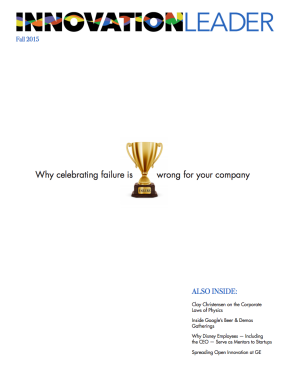 Why are these corporate innovation experts looking at print as their next way to innovate? Because they listened to their audience.
Why are these corporate innovation experts looking at print as their next way to innovate? Because they listened to their audience.
Innovation Leader launched about two years ago as a digital-only publication, with the mission to highlight “how big companies develop new products, manage research and development groups, and innovate in all sorts of other ways,” says founder Scott Kirsner in an interview with Greg Dool in Folio:.
“Since our focus was innovation, initially we were thinking we’d want to innovate on how we communicated with the audience, so we started with videos, downloadable audio, a weekly e-mail newsletter, PDFs, and webinars,” Kirsner relates.
Yet something surprising happened along the way.
“But a few months after the launch, we started getting requests for printed versions of certain research reports we did, like a salary survey and one on how big companies interact with startups,” Kirsner recalls. “And when we’d talk to subscribers at our conferences, they’d all ask whether they were missing something—were they supposed to be getting a magazine as part of their subscription?”
Lightbulbs went off for the Innovation Leader team, and they’ve recently launched their own printed magazine to fill the obvious gap in their content publishing strategy.
“The first issue is 92 pages; future issues will be in that same range, 90 to 100 pages, with a target of 8 to 12 ad pages. There are five ad pages in the first issue, plus a directory in the back of consulting firms and other innovation-related service providers,” Kirsner explains. He also notes that they’ve ramped up their staff to include a sales director plus freelancer writers from around the country. They are also branching out into live events.
“We know people are going to mock it a bit—you’re about innovation and you’re doing ink on dead trees?—and we’ve seen some of that, but we did the work to understand what our audience pays attention to, and this was the end result of that exploration,” Kirsner explains.
What’s truly innovative here is not listening to the sturm und drang of the digital discussion and getting back to the roots of good publishing. We can’t like this enough.

September 7, 2016, 8:05 am